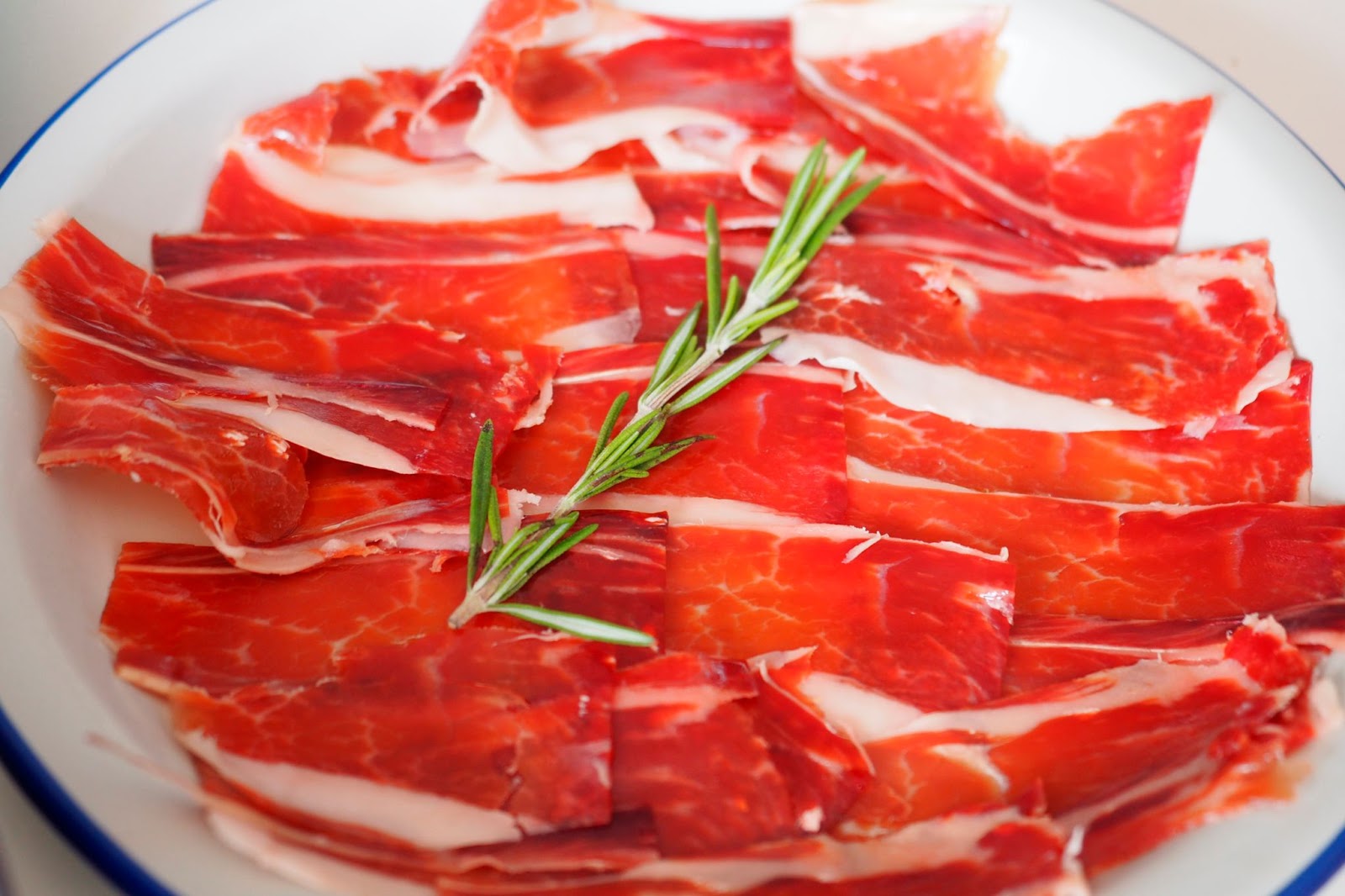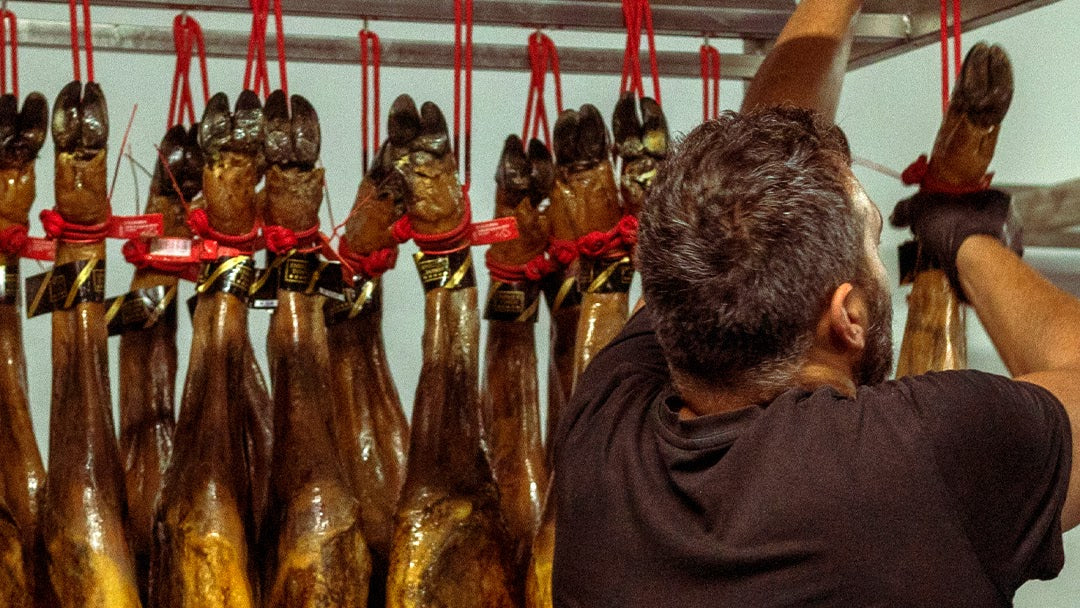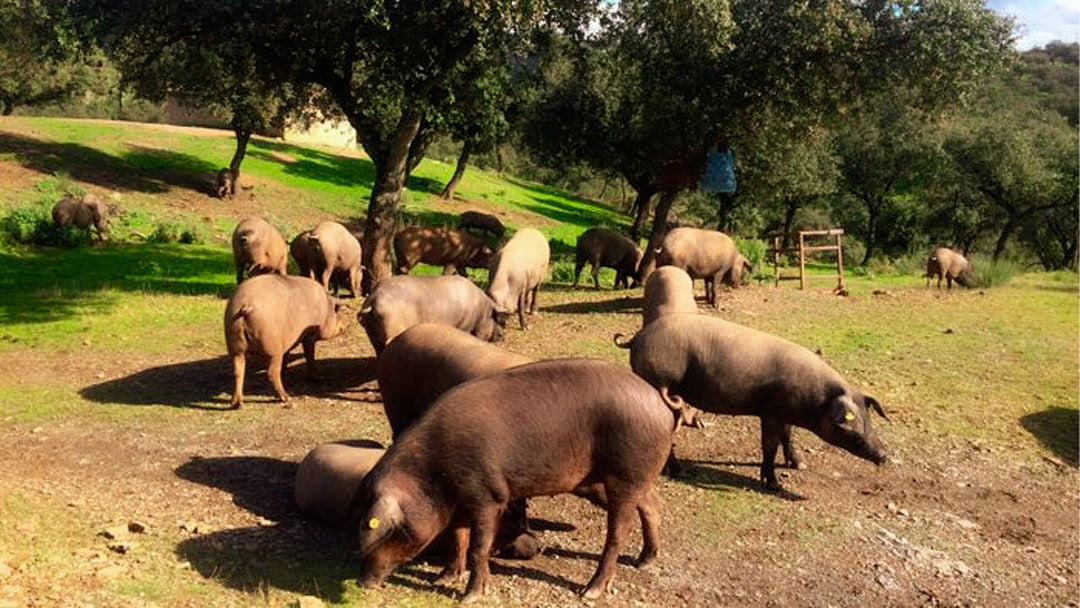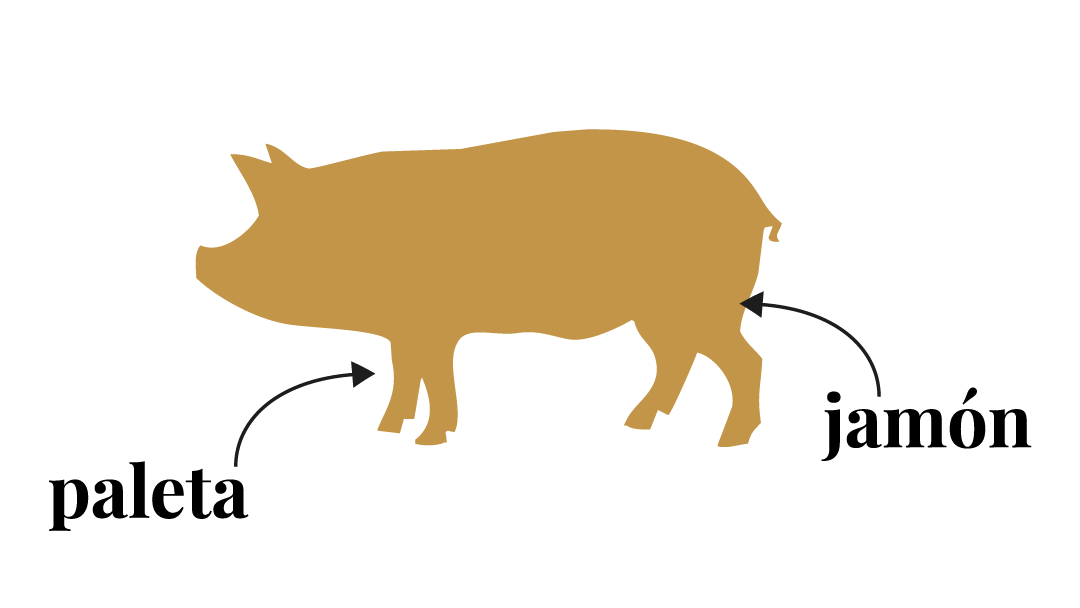El jamón es un símbolo de la cocina española y un reclamo gastronómico en el mundo entero. Se trata de un producto estrella que no puede faltar prácticamente en todas las cocinas y restaurantes de nuestro país y lo arraigamos a nuestra cultura como un icono imprescindible.
El clima mediterráneo ha hecho de la Península Ibérica el lugar ideal para la cría de cerdos ibéricos, de los cuales proviene el producto de más categoría del mundo del jamón:el jamón ibérico.
¿Qué es el jamón?
Como decimos en Enrique Tomás, el jamón no es, nada más y nada menos, que “una pierna de cerdo curada con sal y con tiempo”. Elaborar un jamón puede costar hasta cinco años de dedicación, desde la atención y el cuidado de los cerdos para que crezcan sanos y fuertes, pasando por la conservación bajo unas condiciones muy concretas y “el cocinado” lento y paciente para acabar con un corte preciso. Por ese motivo, se trata de un producto selecto y de calidad. Un alimento que no sirve para quitar el hambre si no que debe proporcionarnos placer.
El jamón es tradición
Como bien hemos dicho, el jamón es propio de España y es algo muy nuestro. Nace de la necesidad de conservación. Hablamos de una época en la que no existían las neveras, ni las cámaras frigoríficas. El objetivo era conservar la carne el máximo tiempo posible. La única manera de conservarla era curándola, metiéndola en sal para que perdiera la humedad suficiente de una forma determinada. Así fue como la pata acababa convirtiéndose en algo fantástico y buenísimo.
Esta tradición fue calando generación tras generación hasta surgir los productores de jamón propiamente, como los conocemos hoy en día. Éstos quienes se encargan profesionalmente de “cocinarlo” con su arte y saber hacer, a partir de tiempo, sabiduría, mimo y sal.
Hoy en día con las nuevas tecnologías, los productores de jamón han podido evolucionar e innovar siempre en beneficio del producto y siguiendo unos estándares de higiene y de calidad irrefutables.
La cultura del jamón
La cultura del jamón ha traspasado fronteras. En España significa muchas cosas, este producto es desde un buen regalo, algo muy típico en un aperitivo familiar, un “must” en lotes de Navidad, el plato estrella de una cena romántica, la excusa o el motivo por el que ir a hacer unas copas con los amigos o el premio por haber tenido un mal día. Todas estas cosas han calado fondo, sobretodo, cuando los turistas vienen a España y viven parte de este ritual, prueban el producto y les encanta. Resulta algo tan irresistible que quieren llevárselo a su casa. Y ahí estamos nosotros para hacerlo llegar.
El jamón español es único en el mundo
Existen dos grandes tradiciones de jamón curado artesanal en España: el jamón serrano y el jamón ibérico.
Podemos diferenciar entre jamón serrano (aquel que se obtiene de cerdos blancos) y jamón ibérico (aquel que se produce gracias a la carne de los auténticos cerdos ibéricos). Los ibéricos únicos en la Península Ibérica y con ellos se hace el famoso “Jamón ibérico de bellota”.
¿Qué diferencia el jamón ibérico de bellota del resto?
Para que un jamón sea considerado ibérico debe proceder de un cerdo de raza ibérica con al menos el 50% de pureza. Esto quiere decir que existen jamones 50% ibéricos, 75% y 100% ibéricos. La pureza de la raza viene determinada por la genética del cerdo, la madre siempre tendrá que ser 100% ibérica, mientras que el padre puede variar su porcentaje de pureza o incluso ser un cerdo no ibérico.
Para que sea de bellota, el cerdo en cuestión, además de proceder del cerdo ibérico, debe de disfrutar de lo que se conoce como “la montanera”, un periodo de libertad en las dehesas, donde los cerdos ibéricos alcanzan su peso ideal comiendo bellotas, pastos y hierbas silvestres, a la vez que hacen ejercicio y se desplazan por las largas extensiones de tierra. Eso les permite generar una carne más jugosa y con más aroma.
Para conocer bien los tipos de jamón que podemos encontrar en el mercado y tomar una buena decisión de compra, indaga sobre el mundo del jamón y ¡sigue los consejos de Enrique Tomás!
Diferencia entre la paleta ibérica y el jamón ibérico
Muchos clientes antes de comprar paleta o comprar jamón nos preguntan qué diferencias hay entre ambos, especialmente desde un punto de vista de calidad, ya sea para consumir en casa o para regalar. Nuestra respuesta es siempre la misma, en cuanto a la raza es el mismo producto, pero en el resto de aspectos son productos totalmente distintos. Vamos a ver las principales diferencias:
- Procedencia: Siendo ambas partes del mismo cerdo ibérico, el jamón es la pata trasera del animal y paleta es la pata delantera.
- Tamaño: El jamón ibérico suele tener un peso de 7 a 8,5 kg aproximadamente. La paleta pesa en cambio de 4 a 5,5 kg. Dado que la morfología de la paleta es más pequeña, más estrecha y menos redondeada que la del jamón, las lonchas son algo más pequeñas y finas también. Respecto a la longitud, la paletilla mide entre 60 y 75 cm frente a los 70 y 90 cm del jamón.
- Sabor: En el caso de la paleta, al ser algo más pequeña que el jamón, la carne está más cerca del hueso, lo que facilitará la rápida absorción de la sal y de la grasa infiltrada. De ahí, también el color rojo más intenso que suelen tener las paletillas con respecto al rojo del jamón. A su vez esto influye directamente en el sabor, la grasa sigue estando en cada loncha, pero su carne está más curada, y por lo tanto su sabor es más intenso en el paladar con respecto al jamón.
- Curación: La curación de una paleta ibérica es de 18 meses a unos 24 aproximadamente. En cambio, el jamón ibérico de es de 24 meses a 36. La lógica indica que, a más peso, más tiempo de curación.
- Precio: Teniendo en cuenta todo lo anterior, nos debe parecer ahora más claro por qué el precio del jamón ibérico es más elevado que el de la paleta. No es la calidad la que determina el precio, sino el tamaño y el tiempo de curación que ha invertido un maestro jamonero.
¿Quieres saber más sobre el jamón español?
En Enrique Tomás te vamos a dar toda la información necesaria para convertirte en un experto jamonero, queremos darte las herramientas para que puedas descubrir cuál es el tipo de jamón que encaja contigo según la finalidad que le quieras dar y tus gustos. Por eso, te proporcionamos una atención personalizada y una calidad garantizada. ¡Te invitamos a vivir la experiencia de comer jamón!
¿DÓNDE SE PUEDE COMPRAR JAMÓN ESPAÑOL?
Puedes comprarlo en las tiendas de delicatessen del país donde vives. Si no lo encuentras y no es el que te gusta, sólo tienes que pedirlo a través de nuestra web/tienda online y te lo enviaremos de forma rápida y segura a donde quieras.
¿QUÉ ES EL JAMÓN ESPAÑOL?
El jamón español es único en el mundo. Se elabora a partir de las extremidades del cerdo blanco o ibérico, curadas en sal y secadas en bodegas naturales por expertos jamoneros que siguen una larga tradición transmitida de generación en generación.
¿CUÁL ES EL MEJOR JAMÓN ESPAÑOL?
Para saber cuál es el mejor, si no los conoces bien, lo ideal es que los pruebes todos y luego el que más te guste será el mejor. En Enrique Tomás sabemos que el mejor jamón es el que deleita a tu paladar cuando lo pruebas, independientemente del precio o la variedad. Lo importante es que, sea el que sea, compres la mejor calidad de su gama.
¿CÓMO/CUÁNDO COMER JAMÓN?
El jamón se consume a cualquier hora del día, en el desayuno, la comida y la cena. Y, por supuesto, como merienda. Dependiendo de la hora del día, puede comerse en forma de bocadillo, en tacos como tapa, en rodajas como aperitivo, como chips de jamón con una sopa o una ensalada. Puedes disfrutarlo a todas horas, sólo tienes que elegir el formato que más te convenga según el momento del día y según el plato.
¿COMPRO JAMÓN CON HUESO O EN LONCHAS?
Responde a esta pregunta con otra: ¿domino la técnica del corte? Si nunca has cortado jamón español o te sientes inseguro, lo mejor es que lo pidas ya cortado porque no sólo no te harás daño, sino que obtendrás más jamón que si lo cortas tú mismo porque nuestros expertos lo aprovechan al máximo.
Por otro lado, la gran ventaja de pedirlo loncheado es que puedes consumirlo a medida que lo necesites y a lo largo de varios meses, mientras que si lo compras entero (con hueso) se recomienda consumirlo en unas tres semanas y la paleta en dos semanas.







